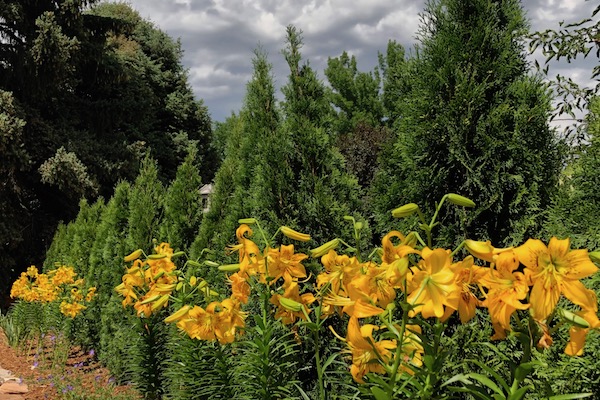Disclaimer:
This is my advice, based on my experience for DIY pruning and fertilizing. Opinions vary, so if you have a doubt, check the internet and look for reputable sites sponsored by states or universities. I would avoid opinions from local Agricultural extensions and master gardeners because, in my experience, most of their advice is not accurate, since it is not based on experience of professionals in the field, who are liable for their work.
Trimming Trees
Shade and evergreen trees can be trimmed anytime. If you want to make major revisions, it is best to do it in winter or early Spring when the tree is dormant to minimize the shock. Heavy pruning in summer can shock or kill some trees. Spring-blooming ornamental trees begin setting flowers in the late fall, so pruning them in winter will remove the spring flowers. To be clear, it is best to prune these trees just after they finish blooming in the spring. Fertilize in April, May and through September, according to type of fertilizer and manufacturer’s recommendation.
Pruning Shrubs
Deciduous/ ornamental shrubs should be pruned after they bloom. You can shape them as desired, cutting off no more than a third of the diameter, and touch them up again in September. However, pruning after September you may risk cutting off next year’s flowers. Evergreen shrubs can be pruned anytime, but only a little at a time. Too radical a cut, can leave large unsightly holes in the plant that may not fill in for a few seasons, if at all. Fertilize in Spring and summer.
Pruning Perennials
These can be pruned anytime after flowering or after the first hard freeze and the foliage dies, just cut it off close the ground. In Spring/Summer, certain flowers will repeat bloom if you dead-head them. You can do this all at once, with a lopper, after it finishes a bloom phase. Typical perennial flowers for this category are: May Night Salvia, coreopsis, and perennials of this sort. Black-eyed Susan, Shasta Daisy, etc. will repeat flower without dead heading. Fertilize in Spring and summer.
Taking Care of Grasses
Ornamental grasses should be fertilized in Spring (April/May), just after you cut off last year’s dead foliage, which is done when you see green starting to poke up in the center of the mass. I recommend leaving the dried/dead tops of the grasses all winter long for winter interest.
DIY Fertilizing
Follow the manufacturer’s recommend application rates (or less). In general, I like to use a balanced organic fertilizer like “Rich Lawn” by Richlawn 10-2-5 for most things, or even 16-4-8 or similar for shrubs. If you want more blooms, use a bloom food with a larger middle number, and apply summer and fall for next year’s flowers. In the Spring, you can use something with a larger first number, but avoid fertilizers with a nitrogen (first number) higher than 27 (Nitrogen this high is usually designed for grass to make it fill in quickly. It also stresses the grass and makes it vulnerable to pathogens). In the fall, its good to use a “winterizer” fertilizer which have lower first two numbers and a higher 3rd number. There are specific fertilizers for evergreens vs. roses and flowers, etc. There are not too many selections, but you can see for yourself the options at Home Depot or Lowes.
If you have any landscaping projects needing walkways, retaining walls or plantings, you may contact me for a bid. Any questions on your DIY pruning or fertilizing send me an email.

